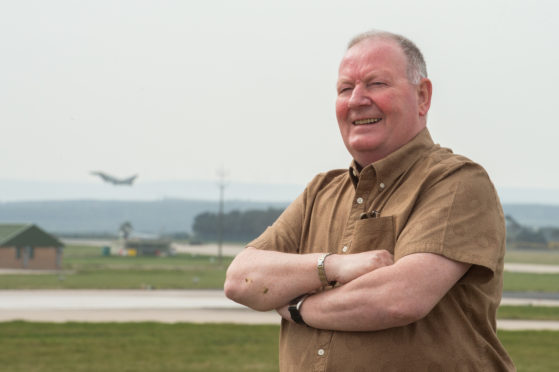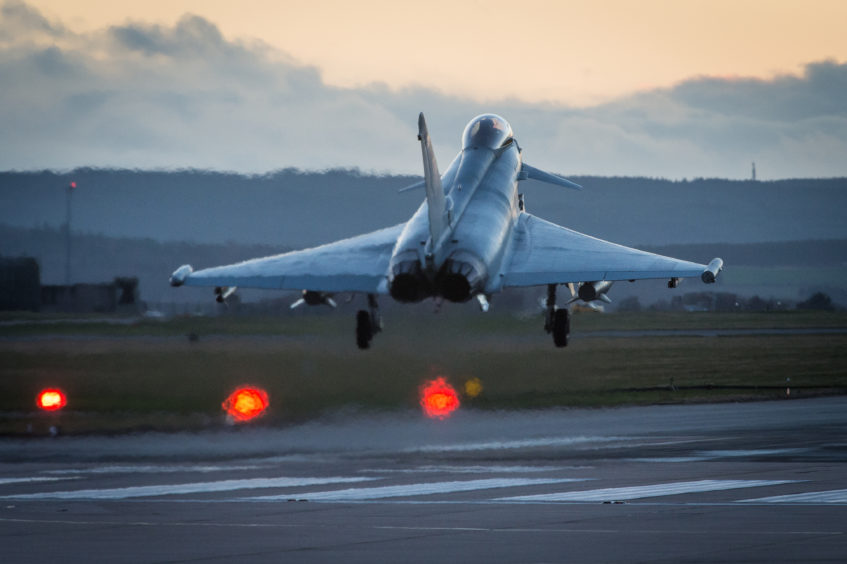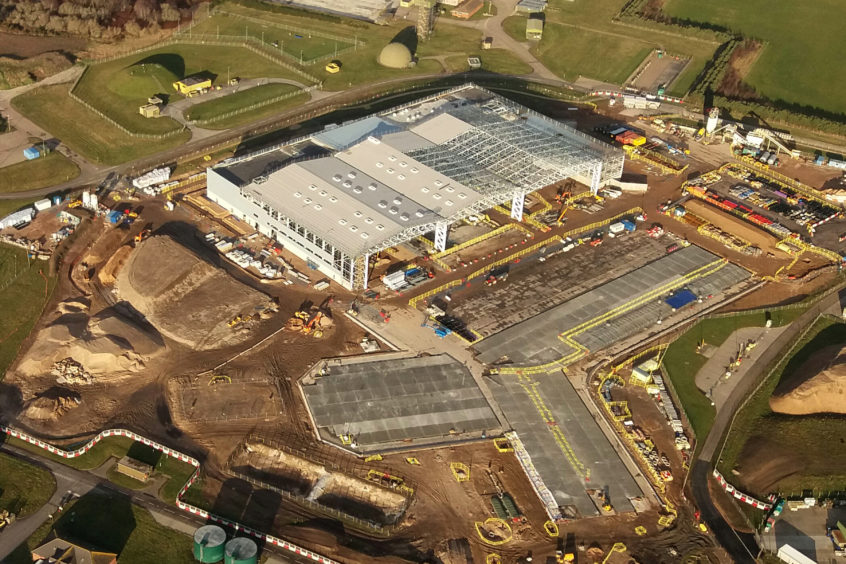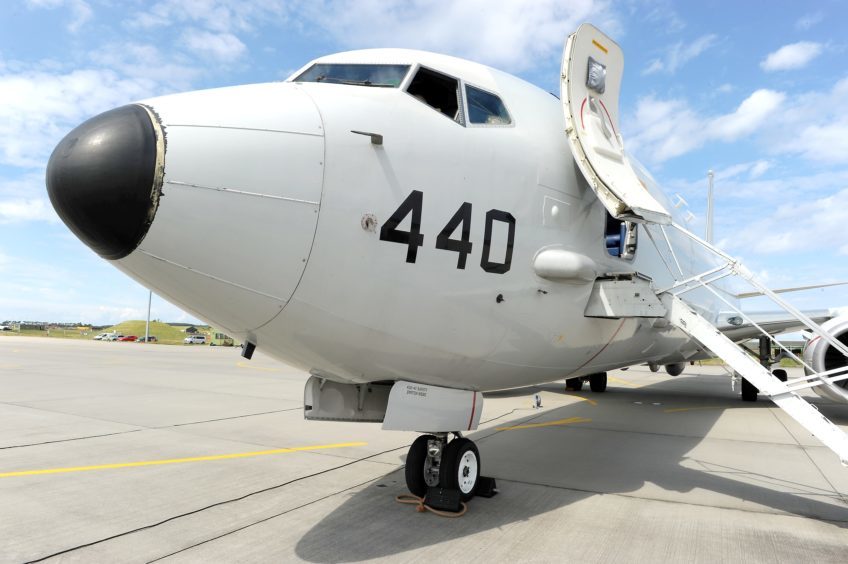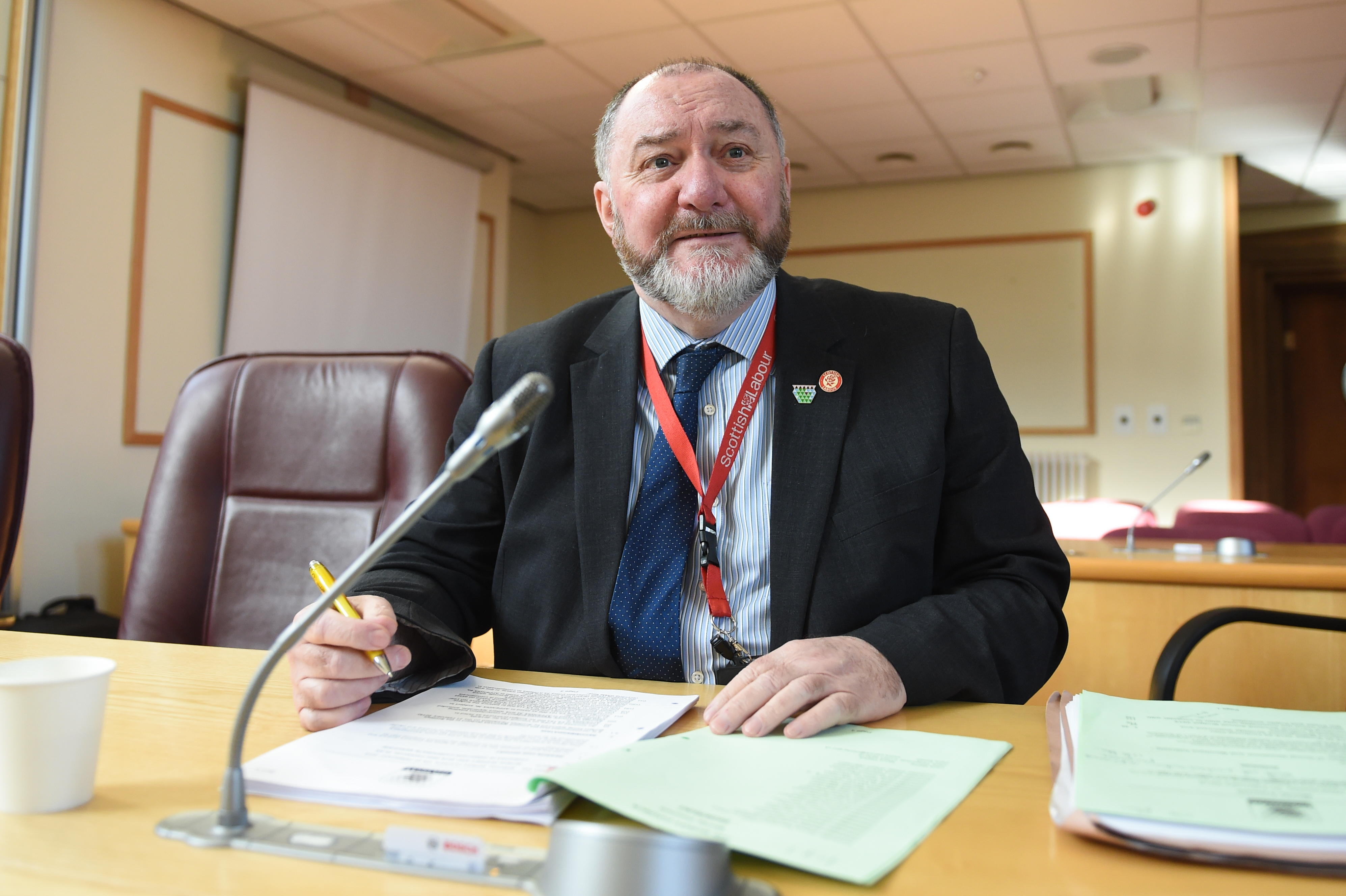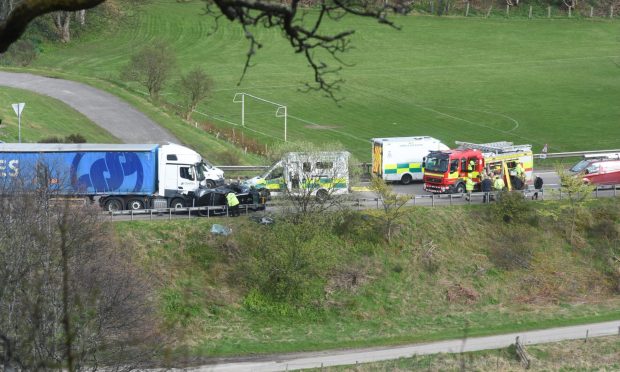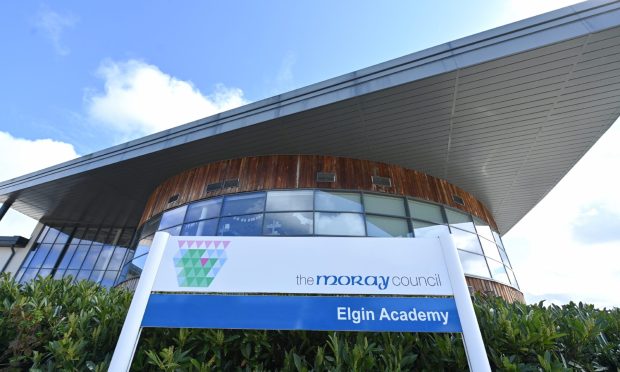RAF Lossiemouth remains at the forefront of the UK’s defence, 80 years after it first opened as part of the country’s war efforts.
Then, it was consisted of wooden huts and 13 aircraft stored in the open as there were no hangars ready.
But today, on the 80th anniversary of the base opening, preparations are well under way for the arrival of the P-8 Poseidon submarine spy planes next year – marking the next chapter for the station.
The £400million revamp is expected to create an economic boost and bring an influx of 2,000 people to the region.
However, the current boom could have been replaced with a crushing blow had a massive public campaign not kept the runway lights on at the base in 2011.
About 7,000 people marched through the town to oppose the closure while a petition that amassed 33,000 signatures was delivered by a battle bus to Downing Street.
Nearly eight years on from the decision, David Stewart, who was chairman of the Save RAF Lossiemouth Action Group, credits that huge outpouring of support for keeping the base open.
He said: “The march was the best thing that happened for us. It really put Lossiemouth on the map. Instead of being some place that nobody had heard of, everyone was talking about us.
“All the business in the town had stopped, the property market wasn’t moving, nobody was buying or selling. It was hard times, not just in Lossiemouth but across Moray because we already knew RAF Kinloss was shutting.
“I think it would have closed had the taskforce not got together. They thought this was a good place for an air base 80 years ago, we just helped them to see that it still is.
“When I see what’s happening now with the construction and the people that are going to be moving here it’s just amazing, I’m just glad to have had a small part in it.”
When the Ministry of Defence decided to keep the RAF in Moray, Lossiemouth became home to Typhoons with the fourth squadron of the jets arriving this year. The move also paved the way to revamp RAF Kinloss into an army barracks.
Since then, pilots have kept a constant vigil as part of the Quick Reaction Alert operation, which responds to unidentified aircraft approaching the UK.
Businessmen in Lossiemouth compared the decision to keep the town’s RAF base open with “winning the lottery” for local firms.
Today an expanded secondary school is already under construction to accommodate more forces families while hundreds of homes are under construction on the outskirts with thousands more planned in Elgin.
During the last decade Moray Council and NHS Grampian have tapped into the skilled workforce from the forces to aid their own recruitment drives.
Sarah Medcraf, chief executive of Moray Chamber of Commerce, said: “RAF Lossiemouth generates more than £100million to our local economy.
“Had Moray lost this base it would have had a huge impact on the entire region. The loss of military spouses employed in the NHS and our schools is just one example of the type of challenges we would have faced.
“RAF Lossiemouth is very much part of our community here in Moray and this will only get stronger with the investment that is being made at the base.”
Moray posting laid path for the rest of councillor’s career
For generations military personnel have moved to Lossiemouth for what they thought would be short postings, only to make the region home permanently.
Senior officers at the base have often spoken of crews being reluctant to give up life in the south to move to the Moray Firth coast.
However, once in the town they often find it hard to give up.
John Divers moved to Moray from Derby for a Navy posting as an aircraft electrician in 1967. The base was known as HMS Fulmar while it was run by the force between 1946 and 1972.
Since leaving the military in 1978, the veteran has taken up other jobs including within social work before being elected to represent Elgin as a local councillor in 1999.
He said: “I came up at a time that hundreds of other guys did, relocating is just one of the things that you have to do.
“Within a year of moving up though I had met my future wife and started a family.
“When it came to 1978, if I had wanted to stay in the military I would have had to move away, which is something I wasn’t really prepared to do.
“I’m sure it’s a decision that many personnel are still making today.”
Merseyside-native Bob Pountney’s first posting at RAF Lossiemouth was in 1988 as part of the base’s search and rescue operations.
Today he continues to share his passion and knowledge for the Sea King helicopters he flew with visitors to the Morayvia attraction in Kinloss.
He said: “Circumstances really meant that I ended up retiring here when I left the air force. The quiet life is something that appealed.”
The next chapter
From next year RAF Lossiemouth will gain a new role as home to the new squadron of P-8 Poseidon spy planes.
The first of the huge aircraft is due to be delivered to the UK in America later this year before touching down in Moray during 2020.
Specialist crews on the planes will be tasked with patrolling the North Atlantic in search of Russian subs venturing near Scottish water.
Defence Secretary Gavin Williamson described the mission as “integral to national security” during a visit to the base last year.
Moray MP Douglas Ross said: “We saw when the base was under threat how important it was to the local community when we marched in our thousands to save it.
“I’m incredibly proud that this current Conservative UK government is investing heavily in Lossiemouth as the base of the Poseidon P8s. More than £400m will be invested throughout this programme with an additional 400 personnel coming to the base.”
And Moray SNP MSP Richard Lochhead said: “As the base continues to expand for the arrival of the new P-8A Poseidon maritime patrol aircraft that will be based in Lossiemouth, it is set to play an even greater part in the defence of the country.
“The expansion will benefit the area hugely, not least with the creation of new high-skilled jobs that will be a boost for the wider local economy.”
